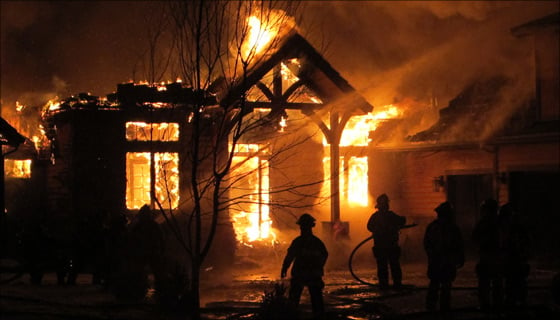
Fire-related events represent a significant portion of an insurer's claims, upwards of 23.8% of expenses.
According to the National Fire Protection Association (NFPA), there were approximately 1.3 million residential fires resulting in an estimated $14.8 billion in losses in the US in 2020. For commercial properties, the percentage of claims that are fire-related is typically lower than for residential properties, but the damages are still significant, and result in higher claims, as well as added business interruption losses. According to the NFPA, there were approximately 99,000 commercial structure fires resulting in $2.6 billion in property damages.
Given the extent of the risks and damages, and the growing availability of data and technology that can make a marked difference in assessing and mitigating these losses, it is perhaps alarming that insurers do not scrutinize their fire risk assessment strategies and fire suppression rating schedules more intensely.
The most common fire risk applications rate fire protection of properties, in large part, based on their distance to fire stations, on a score of 1 to 10, and do so mainly at the community level, giving all properties in an area the same rating.
These traditional tools rate risk based on criteria including (a) the availability of fire hydrants, (b) the quality of the local fire department, and (c) the water supply in the area. These models place an emphasis on the distance to fire stations with little consideration for drive time from the fire station to the property location.
These systems fall short in our estimation. The potential exists to make a much more informed and scientific assessment based on the data points most highly correlated with fire damage to a property.
Society, and the insurance industry, are in the midst of an information revolution. The scope of available data is rapidly expanding. Yet, fire protection capabilities are primarily evaluated today according to the same limited data used in 1972: a location’s fire district and closest estimated water source.
What are the benefits of the HazardHub Fire Suppression Score (FSS)?
HazardHub has deep experience with property risk assessment, related data–and making that data available to insurers. We’ve applied that experience to fire risk scores–and developed our own fire risk score to access the most up-to-date and relevant data to calculate fire risk scores based on the data that most strongly correlates to risk and loss.
HazardHub Fire Suppression Score (FSS) assesses the level of fire suppression of individual property risk and helps insurers, underwriters, and actuaries make more informed decisions about their risk exposure.
Underwriters and actuaries can now assess the potential risk of fire damage for individual locations – every individual and commercial property location in the US – rather than for the entire district. This will enable insurers to make more informed decisions on the risk exposure of specific structures.
HazardHub FSS considers these four critical factors around each property to personalize the fire risk for each location.
- Distance to Water – How far is the property from a fire hydrant? If no hydrant is available, then the model considers perennial water sources within 1,500 feet.
- Drive Time to Fire Station – How much time does it take a fire truck to travel from the station to the property?
- Fire Station Staffing – Is the fire department staffed with full-time, volunteer, or blended firefighters?
The benefits of this approach and HazardHub Fire suppression score (FSS) include:
- Differentiate Risk Accurately: HazardHub FSS scores properties at the address level on a scale between 100-300, allowing insurers to clearly differentiate fire risk for properties within the same community.
- Improve Underwriting: HazardHub FSS helps underwriters identify potential risks and opportunities in underwriting, allowing them to make more informed, accurate, and immediate accept/decline decisions.
- Improve Pricing & Profits: Set premiums that accurately reflect the fire risk of each property. Offer fire policies to properties deemed too risky by other classification systems by creating more refined segments with rates that are commensurate with the risk. Make more profit on properties already booked.
- Gain Competitive Advantage: Use HazardHub FSS to gain a competitive advantage over insurers that do not use FSS. Get additional fire risk insight on properties, make faster underwriting decisions, and set accurate pricing for all policyholders.
In summary, HazardHub FSS is a modern fire scoring tool that will help insurers assess fire risk more granularly and accurately. It will enable the insurers to serve more customers sustainably, making the world more insurable.